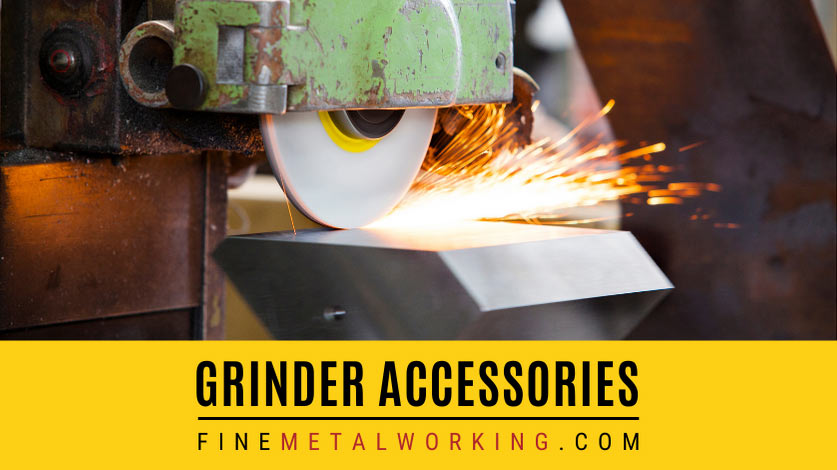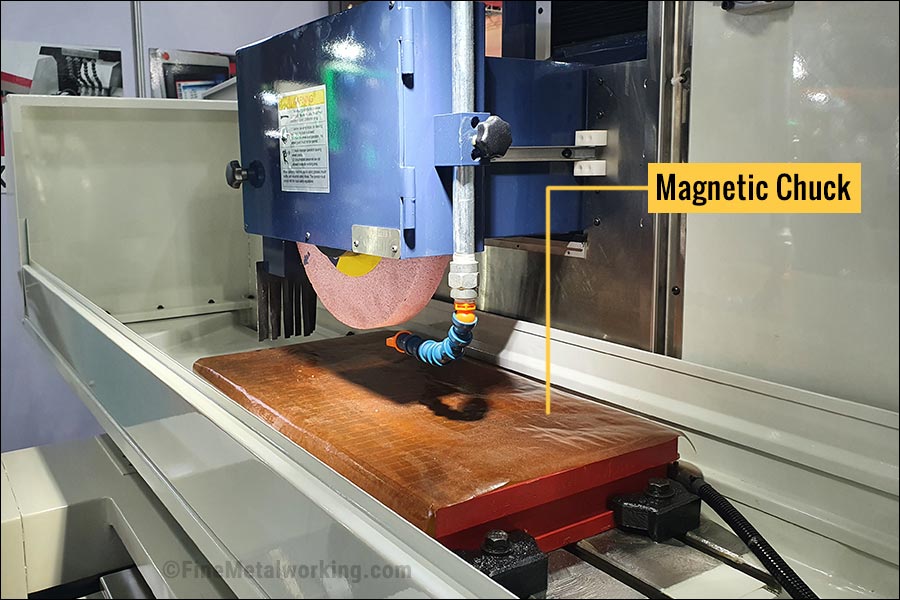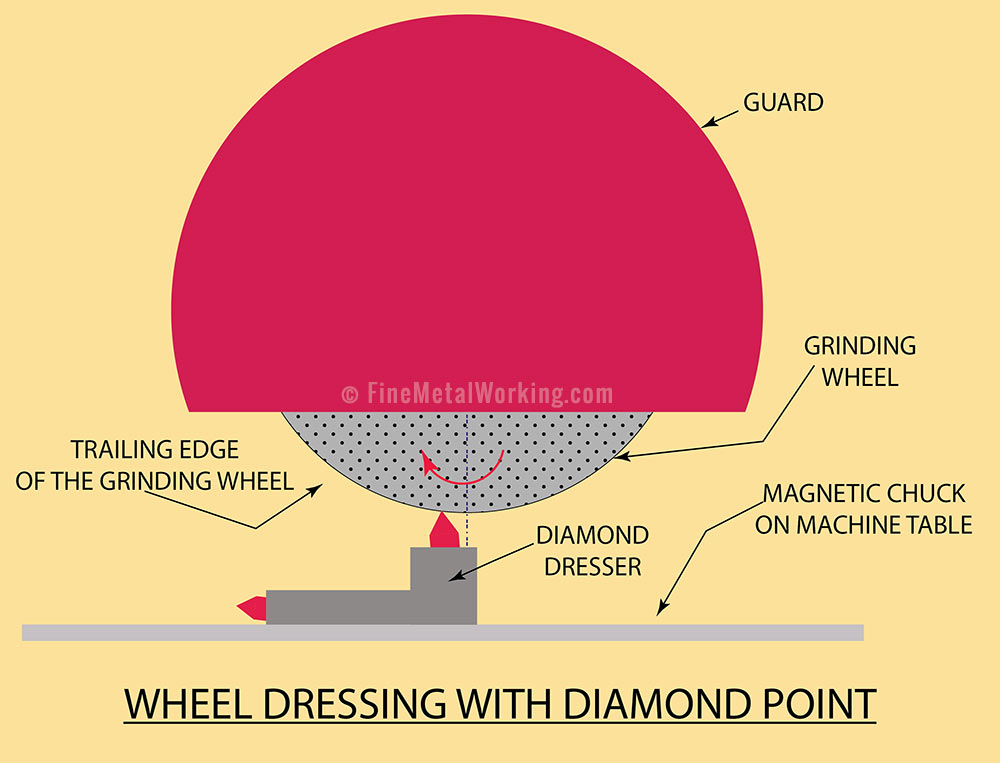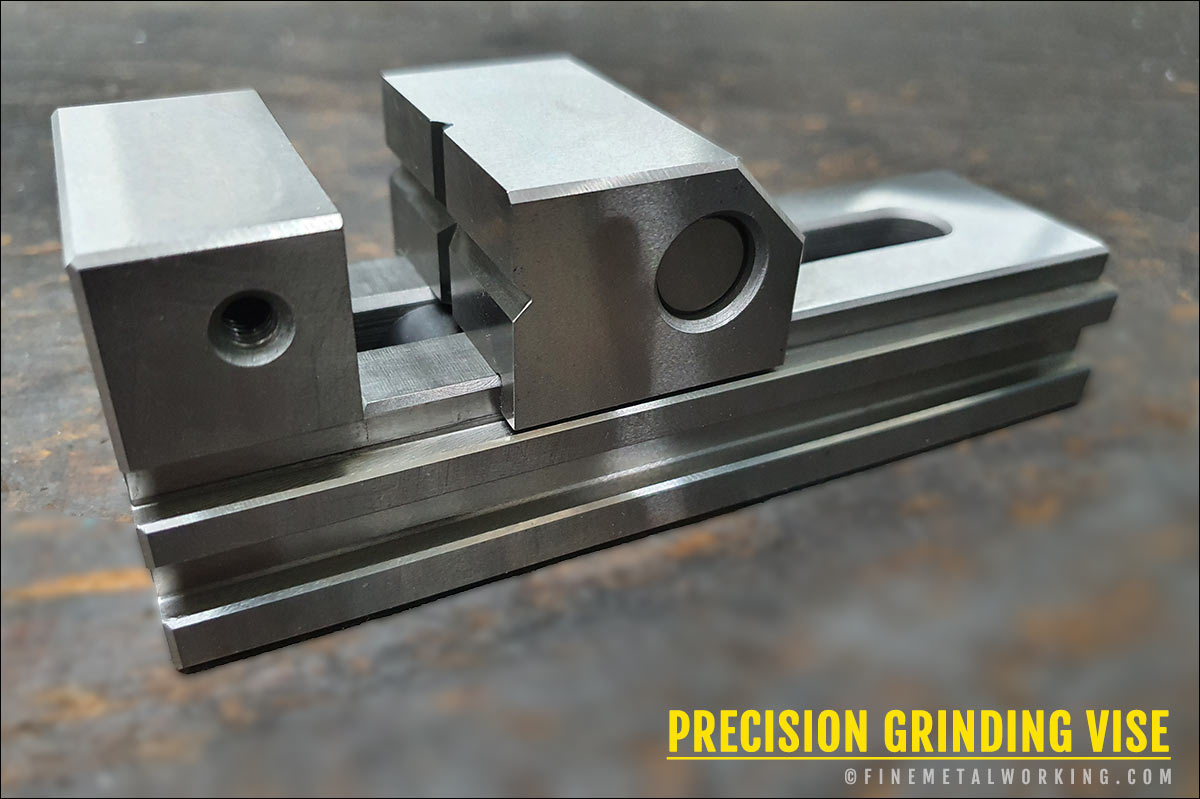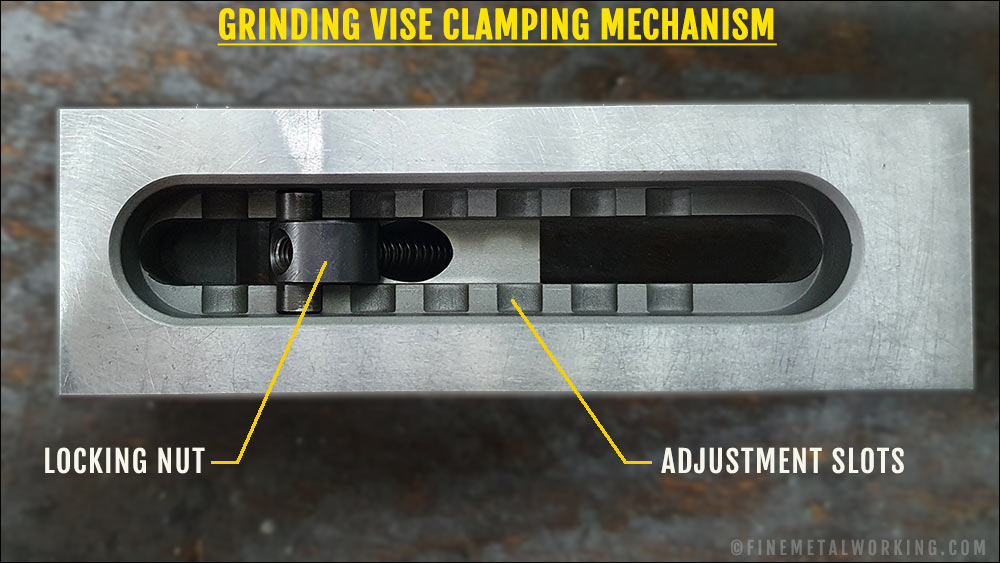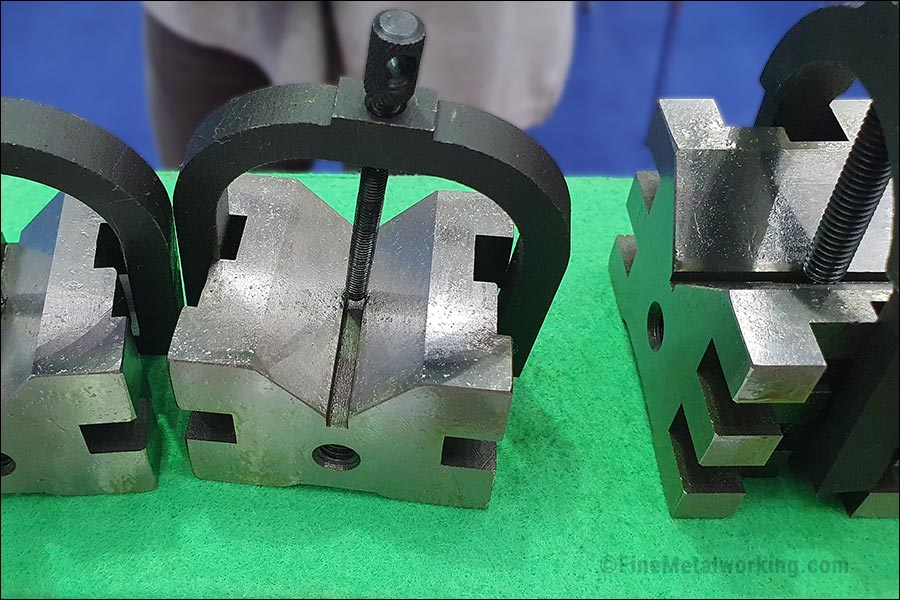A surface grinder is a metalworking machine that is used for finishing the surface of the workpiece.
Following are some of the most commonly used accessories for surface grinding machines.
- Magnetic chuck or table
- Wheel Dresser
- Grinding Vice
- Sine Table
- V-Blocks
Let me explain to you the uses of these surface grinding accessories.
1. Magnetic Chucks
Magnetic chucks are work-piece holding devices by means of magnetic force and you use this extensively in surface grinding machines; magnetic chucks are available in circular and rectangular shapes. This is extremely useful when you need to grind small components.
You have two types of magnetic chucks- one with a permanent magnet where you engage or disengage the magnet by using a lever; and another with an electromagnet where you can switch the magnet on or off (from your electric box).
The magnetic chuck is not a part of your machine, but an accessory for the surface grinder that needs to be clamped onto the bed. Hence, you need to true the top of the chuck with the wheel axis, by grinding off a thin layer before use.
Since you will be using the magnetic chuck in on position during grinding process, it is wise to grind its top after putting it on or in engaged position.
2. Wheel dresser
Your diamond wheel dresser has single or multiple diamonds mounted on a shank by a sintering process. Single point dresser is more popular and you use it for truing and dressing of your abrasive grinding wheel.
When you use the grinding wheels for grinding, over time the wheel surface becomes glazed and filled with chip particles. You have to true and dress such grinding wheels to improve the performance of the wheel and geometrical accuracy and finish of the work-piece. During dressing, you are removing the glazed abrasive particles and expose the fresh abrasive particles beneath it.
You have to make a holder and fix the dresser in it, tilting slightly towards one side.
For doing the dressing process, mount your dresser on the magnetic chuck (on the trailing edge of the grinding wheel) roughly 5-8 mm away from the vertical axis of the wheel; tilting of the dresser should be in the direction of wheel movement. This method is safe because, in the case of the dresser getting loosened, the grinding wheel pushes it out and will not suck it.
You can use a depth-of-cut of 0.02-0.05 mm for roughing and 0.01-0.02 for finishing.
3. Precision Grinding Vise
You need a good quality vise (or vice outside the United States) for holding components during surface grinding. Your vise is hardened and ground on all sides and has one fixed jaw and one movable jaw.
Vice with a ‘V’ on the inside of the movable jaw is available for clamping round work-pieces. You can use a smaller vise on a magnetic chuck and clamp the bigger vice directly on the machine table.
You also have double partition vice for clamping two work-pieces simultaneously.
4. Sine Table
Suppose you need to grind your workpiece at a particular angle with a high level of accuracy, Sine Table comes to your rescue.
Your simple sine table has two rectangular hardened and ground plates connected together by a hinge and roller. You can tilt the top plate on the axis of the hinge up to 45 degrees and lock it at any desired angle. The top plate has a magnetic chuck or a precision vice so that you can clamp your workpiece. The bottom plate can be clamped to your machine table. Also, you will find a reference roller fixed on the movable side of the top plate.
For setting the top plate (on which the workpiece is mounted) at an angle with the bottom plate, you need to calculate the vertical distance between the inner face of the bottom plate and the roller on the top plate. You can easily calculate this by going to the manufacturer’s website. Once you get this vertical distance, use your slip-gauges to build up the height and set the angle between the top and bottom plate.
You also have a compound sine table where you are able to set two different angles in two axes or planes.
5. V-Blocks
Your V blocks are rectangular blocks with a V-shape on the top for holding round-shaped components. The V blocks are made of good quality steel, hardened and ground and you can mount it on the magnetic chuck of your machine.
Your V block comes in various lengths and clamps to clamp the work-pieces on the V block.
V blocks are convenient to clamp circular components for surface grinding on your machine.

